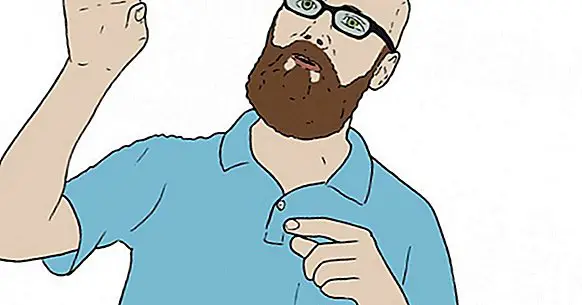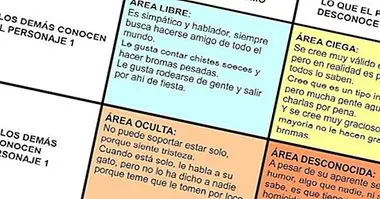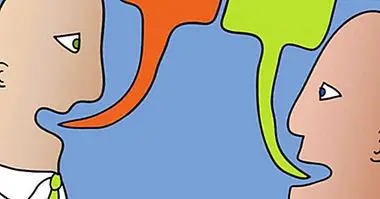The 5 practical keys to master the nonverbal language
There are many myths and ignorance about the nonverbal language .
Gestural communication and everything that we transmit with our physical expression has a cardinal importance when communicating with other human beings. In fact, experts claim that up to 80% of what we transmit we do it nonverbally, and only 20% have to do with our words . Surprising, is not it?
Despite this, its importance is unquestionable, since for many years a large part of the communication of the human species was based exclusively on gestures, expressions and grunts .
Non-verbal language: can it be improved?
Through this limited form of exchange of information the human being should be able to understand if someone harbored friendly intentions or not, if there was something to worry about immediately, or if he had any chance of mating with other members of the tribe.
The growing proliferation of scientific studies has made it possible to understand the function of non-verbal language in greater detail, but in some cases it has also contributed to creating a too-extreme view of its importance.
The reality is that in most situations you can not draw conclusions from a single gesture separately . They must be integrated into a context and a set of signals in order to give real meaning to that expression.
The science of body language still has many puzzles to unravel, but you can start with these five concepts that will allow you to improve your social skills and mastery of non-verbal communication .
1. Express what you feel and feel what you express
There is a physiological mechanism, called proprioception, that establishes a double meaning between your emotions and your body language . And that has enormous advantages for those who know how to use it in their favor.
When you feel an emotion or a feeling invades you, your neurons send an order to the muscles to adopt a certain position. If you feel insecure, for example, the consequence is that you will end up crossing your arms to establish a barrier.
However, some studies have shown that there is also the opposite way. If you consciously adopt a posture of insecurity, your mind will begin to experience the corresponding emotion. Your brain understands that if it is showing that gesture it is because it should feel that way.
The good news is that it is possible to use this double way to create positive states . If you adopt a position of trust, such as your head high and your shoulders erect, you will begin to feel more confident and relaxed.
2. The further away from the brain, the less control
Several investigations have concluded that the arms, hands and torso are the parts of the body more easily controllable in a conscious way. That is why many people are able to pretend through their nonverbal language that feels some emotions, when in reality they are experiencing others.
But it also seems that the farther away from the central nervous system a part of the body is, the less conscious control we can exert on it. It is probably a matter of lack of attention rather than physical distance, but in any case we tend to have less position in the legs than in the arms.
It is a good idea that besides looking at the body language of the upper part of the torso pay attention to the feet of your interlocutor because they will provide you with very valuable information. Our feet tend to point towards that which interests us, be it a person or an escape route, and often go completely unnoticed.
3. The face is the mirror of the soul
Expressions of the face are also quite representative of someone's mood. In fact, there are even theories that link facial features with personality, such as Morphopsychology.
For many years of evolution we have had to be able to communicate emotions accurately to survive as a species. In this context and due to the large number of existing facial muscles, the face has become the most reliable mirror of the soul.
Although there are many nuances, there are 4 to 6 basic emotions that our facial microexpressions are able to communicate: joy, fear, anger, sadness, disgust and surprise. Each involves certain facial muscles and must be integrated into a global context that includes the rest of the body language and oral communication.
It is possible to falsify to some extent the facial microexpressions to camouflage feelings, but it is practically impossible to control all the muscles involved in a conscious way . That's why there are always clues such as the lack of elevation of the cheeks and eyes in the false expression of joy:
4. Imitate the position generates confidence
There is scientific evidence that supports the fact that when two people like each other or spend a lot of time together, tend to unconsciously adopt the same body language . Much of the responsibility lies with the emotional contagion through the mirror neurons.
To imitate the body language of another person is a simple and easy way to start establishing a bond of trust, although it should be done carefully so that it is not obvious.
To get it you must be selective in what you imitate : do not copy gestures that would not be natural to you, do not imitate them immediately after your interlocutor makes them, and vary their amplitude and intensity. It is also a good idea to avoid reproducing negative expressions so as not to increase their contagion, although it will depend on each specific situation.
Although it may seem manipulative, it is not when the objective is honest. Many people with great social skills he has incorporated it unconsciously to get his interlocutor to relax and open up to deeper conversations.
5. Contact with self reveals a lot of information
Another way to get a lot of information out of non-verbal language is through the type of contact with oneself.
Instinctively young children cover their eyes when they do not want to see something or cover their ears when they do not like what they hear. They also cover their mouths with a finger when they want to silence their interlocutor. Although with less intensity, these gestures usually endure in adulthood.
When someone touches their eyes, ears or mouth it can be a unconscious attempt to block something you do not like . To avoid misinterpretations (such as really catching an eye), you must also take into account other signs that confirm that conclusion.
On the other hand, touching oneself by joining hands or rubbing one's arms may indicate a need for support, perhaps as an inheritance from the comfort in the form of physical contact that our parents offered us in childhood. This signal can help you sense that someone is feeling uncomfortable and needs to feel supported.



















